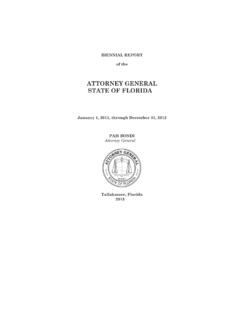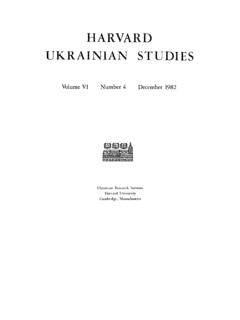Transcription of Myth and Historical Facts About Rome and the Huns Leader ...
1 CORRESPONDENCE Anar T. Sadyrova 2016 Sadyrova et al. Open Access terms of the Creative Commons Attribution International License ( ) apply. The license permits unrestricted use, distribution, and reproduction in any medium, on the condition that users give exact credit to the original author(s) and the source, provide a link to the Creative Commons license, and indicate if they made any changes. INTERNATIONAL JOURNAL OF ENVIRONMENTAL & SCIENCE EDUCATION 2016, VOL. 11, NO. 12, 5299-5310 Myth and Historical Facts About Rome and the Huns Leader attila Anar T. Sadyrovaa, Muratbek M. Imangazinova, Saylauhan K.
2 Kozhagulova, Gulmira S. Suleimenovaa and Arailym A. Amanzholovaa aZhetysu State University named after Ilyas Zhansugurov, Taldykorgan, KAZAKHSTAN ABSTRACT The article reviewed the history of Rome and attila , their influence on the political and social situation in Europe. The aim of the article is to study the origins of Rome, its crisis and destruction. It also considers the impact on the collapse of the Empire, the impact that attila had on the destruction of Rome and the analysis of attila as a political and military Leader , his history, heritage and influence on the cultures of European and Turkic people.
3 The article also tells About the life of the Huns. The principles of historicism, objectivism, dialectical unity of the Historical and logical are applied in the article, as well as the comparative- Historical and Historical -analytical methods. Abstraction and generalization were applied from the general methods of scientific knowledge. The analysis of foreign and domestic historians is undertaken, and the folklore of European countries, in particular the North German and Norse tribes is considered in the article. The results of the article show social, economic and political factors that influenced the emergence and decline of Rome, describe attila 's personality as a prudent and cruel Leader , and the motives that drove him like a lust for power and expansionist views.
4 The formation of attila as a legend contributed to European militarized tribes, as well as his pursued policy of cult of personality. The Romans endowed him with exceptional abilities to explain their own military setbacks; the church cultivated the image of attila in order to strengthen its influence. Article supplements the Historical chronology of Europe, the history of the Turkic people. The study of folklore related to attila allows us to look into the development of literary tendencies in medieval Europe KEYWORDS ARTICLE HISTORY Birth of the Eternal City, Ancient empire, biography of attila , empire of nomads, military companies Received 28 April 2016 Revised 21 May 2016 Accepted 29 May 2016 Introduction The article analyzes the chronology of rise and formation of the Roman Empire, the causes of its decline, explores the role of attila in the destruction of the Roman Empire.
5 We consider the personality of attila , culture of the Huns and substantiate the influence of attila on the cultures of European and Turkic people. The Roman Empire was the greatest power of its day (Bunson, 1994). In substance, this was the first example of a superpower in human history (Livy, OPEN ACCESS 5300 A. T. SADYROVA ET AL. 2014). History of Rome is studied quite well, especially their social medium, legislation, state structure (Alfoldy, 2014; Louis, 2013). Two problems cause a discussion in the process of studying Rome. 1. The emergence of Rome.
6 Basic theories are Rome was established by the Trojans as a result of defeat in war with the Greeks (Livius, 2013), Rome was founded by aboriginals who inhabited the peninsula (Mommsen, 2015; Holloway, 2014), and also myths About Romulus and Remus. 2. The reasons of the decline of Rome. Basic theories are Rome was defeated under the weight of barbarians (Kelly, 2008), crisis of the slave-holding system (Shtaerman, 1957), and political instability (Mitchell, 2014). The lack of these Facts do not provide us an objective review of the Historical chronology of the European nations.
7 In this paper, we also consider the life history of attila the Leader of the Huns. His history has many gaps (Fields & Noon, 2015). This is caused by the fact that only a small part of recorded information About attila still remains, and it was committed to paper by his contemporaries. Roman or Byzantine historians made most of the Historical records About attila (Thompson, 1999), as the barbarian tribes at that time had not yet been taught to write (Mar cz, 2015; Fields & Noon, 2015). This fact has created many myths About attila , which transformed into the folklore of many nations in the course of time (B uml, 1993).
8 During his lifetime attila he began to become ingrained in society as a legend it was directly related with his military successes (Roberts, 1993; Mitchell, 2014). The myths and history of Rome and attila considered together in the article, because their history inseparably linked, and some scientists believe that it was attila , who destroyed the Roman Empire (Kelly, 2008). The image of attila is present in the myths and folklore of most European countries (Margulan, 1985; Mar cz, 2015). The article considers the impact on culture and the reasons of inculcation of the image of attila in the legends.
9 The originality of the article lies in reviewing the Historical events in comparison with the folklore and myths, and the contemplation of influence factors on the medieval epic literature. The study of these issues would allow us to restore the Historical chronology of Rome, to estimate attila s influence on Rome and the political situation in the fifth century AD, as well as to understand the tendencies in the development of culture of the European nations in the Middle Ages. Aim of the Study 1. Determine how did the Rome arise and the reasons of its decline. 2. Determine the attila s influence on Rome and European tribes in the fifth century AD.
10 3. Analyze the image of attila in the legends and his influence on European culture. Research questions INTERNATIONAL JOURNAL OF ENVIRONMENTAL & SCIENCE EDUCATION 5301 What had influenced the emergence of myths About attila and the Roman Empire? What are the features of Hun culture? Which influence did attila exert on the epic literature of European nations? Methods The methodological and theoretical basis of this study consists of principles developed in the field of Historical science, namely, the principle of historicism, objectivism, dialectical unity of the Historical and logical, as well as the comparative- Historical and Historical -analytical methods.



















